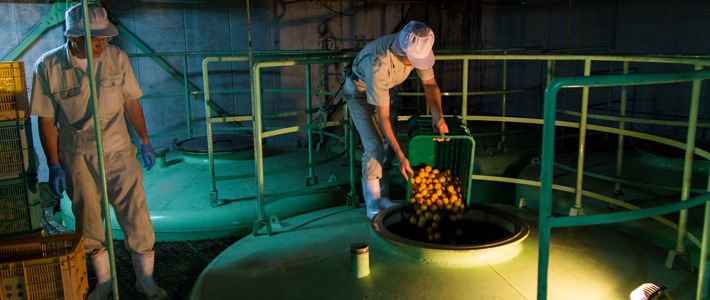
A Tasty Tipple: From Plum Wine to “Umeshu”
Guideto Japan
Culture- English
- 日本語
- 简体字
- 繁體字
- Français
- Español
- العربية
- Русский
Umeshu Taking off in Asian Markets
Although early attempts to popularize umeboshi overseas have met with a less than enthusiastic responses, exports of umeshu, another product made from Japanese plums, are booming. According to National Tax Agency statistics on exports of alcoholic beverages, liqueur exports, including umeshu, more than doubled from ¥1.84 billion to ¥4.21 billion between 2011 and 2016. This upward trend has continued into 2017, with exports increasing 9.6% over the first six months to ¥2.2 billion. Umeshu is a major reason for this surge in sales. According to an NTA survey, the drink is particularly popular with young women in Hong Kong, and many people now prefer it to sake as an accompaniment to Japanese food, choosing it for its sweetness and easy drinkability.
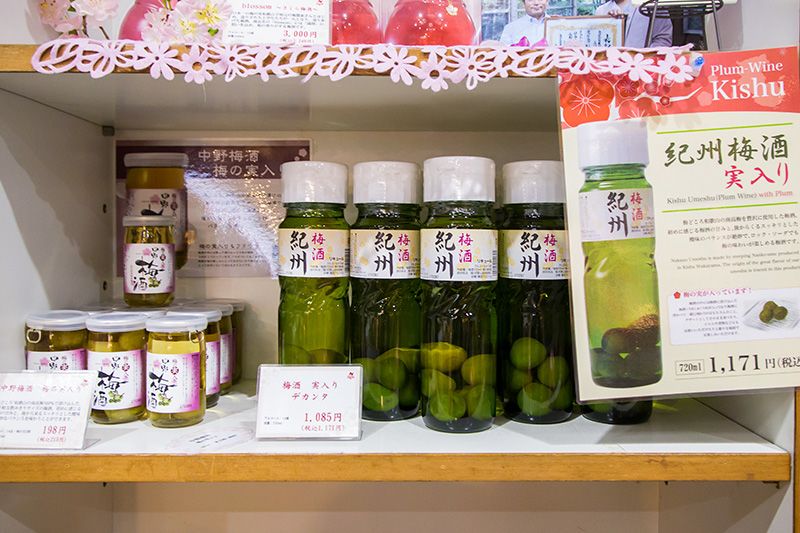 Umeshu with the unripe ume still in the bottle on display at the souvenir shop inside the Nakano BC factory.
Umeshu with the unripe ume still in the bottle on display at the souvenir shop inside the Nakano BC factory.
 Yamamoto Yoshiaki, one of Japan’s few specialist umeshu tōji.
Yamamoto Yoshiaki, one of Japan’s few specialist umeshu tōji.
“Umeshu offers a pleasantly refreshing experience of sharp citric acid flavors, balanced with the fruity aroma and taste of ume plums,” says Yamamoto Yoshiaki, an officially certified umeshu tōji, or master brewer, and head of production at umeshu maker Nakano BC. Yamamoto knows his plum wine, having created Kishū Umeshu Kōnankō, a brand that won top honors at Japan’s biggest umeshu contest.
Umeshu has a fruity bouquet that stimulates the appetite and a refreshing drinkability thanks to the sharpness of its citric acid bite. Its delicate sweetness is popular with young women and people who find beer and hard liquor tough to stomach. In addition to providing a pleasant flavor, the citric acid and other active ingredients contained in the ume are thought to imbue the drink with a number of health benefits as well. These include aiding in recovery from tiredness and heat exhaustion and improved circulation. Yamamoto proudly characterizes umeshu as “tasty, good for you, and made only in Japan.”
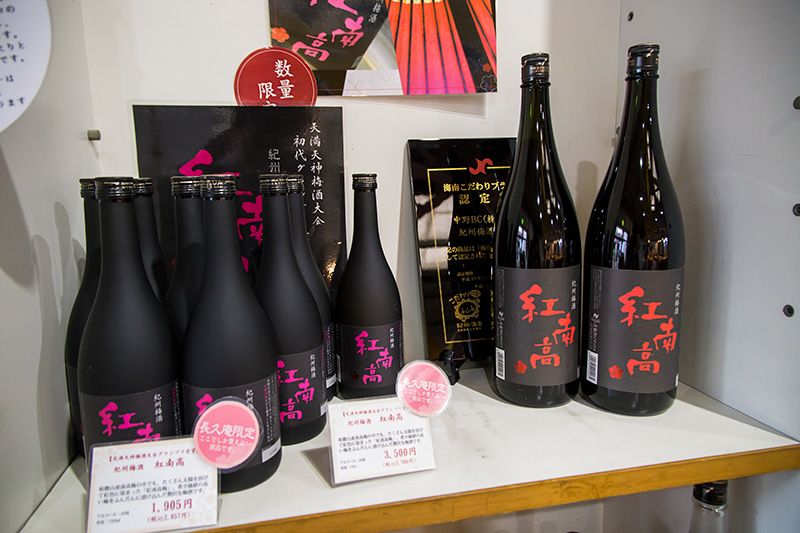 Yamamoto’s pride and joy, Kishū Umeshu Beni Nankō.
Yamamoto’s pride and joy, Kishū Umeshu Beni Nankō.
Using Science to Harness the Potential of Ume
Nakano BC (the initials stand for biochemical creation) is headquartered in Kainan in the midwestern part of Wakayama Prefecture, the center of Japanese ume production. The company started in 1932 as a producer of soy sauce and switched to alcoholic drinks in 1952, making mostly shōchū at first. In 1958, the firm started brewing sake, and its brand Chōkyū became the best-selling brand in Wakayama. Its Kinokuniya Bunzaemon series of sake is also well known. In 1971, it started producing ume juice, with the aim of increasing demand for the local Kishū plums, and branched out into umeshu in 1979.
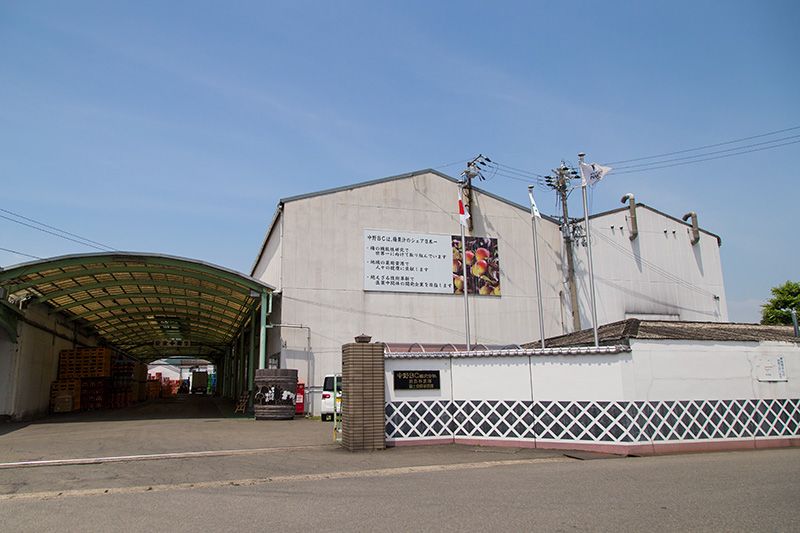 Nakano BC’s brewery stands behind a traditionally styled wall.
Nakano BC’s brewery stands behind a traditionally styled wall.
The firm’s factory boasts a research center and food science research laboratory that analyzes ume and other ingredients used in the company’s products. In addition to maximizing the flavor and health benefits of plums for the company’s brewing business, the laboratory also produces a range of ume extract products and a top-selling ume juice.
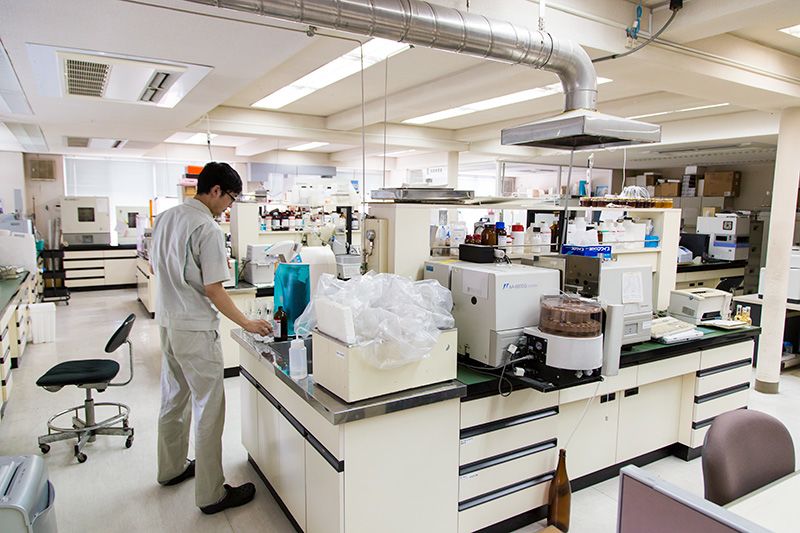 The research center is packed with high-tech, precision machines.
The research center is packed with high-tech, precision machines.
 Company president Nakano Kōji talks about boosting the profile of umeshu overseas.
Company president Nakano Kōji talks about boosting the profile of umeshu overseas.
Nakano BC is unique among producers of alcoholic drinks for having a full-fledged, onsite tourism department. Part of this initiative is the company’s Chōkyū-tei Japanese garden, built on the factory grounds in 1983. The garden covers some 12,000 square meters and is open to the public. It is also part of the tour of the firm’s brewery operation, which offers tastings and an opportunity for visitors to try their hand at making their own umeshu. Around 40,000 people take the tour each year, including around 1,000 foreign visitors.
Overseeing the company’s umeshu and tourism business is third-generation president, Nakano Kōji. Nakano says the firm is putting a lot of effort into attracting more visitors from overseas. “We want as many people as possible to experience the production process first hand at the brewery,” he explains. “The hope is that this will lead to a better appreciation of umeshu abroad.” The firm currently exports its umeshu to 22 countries.
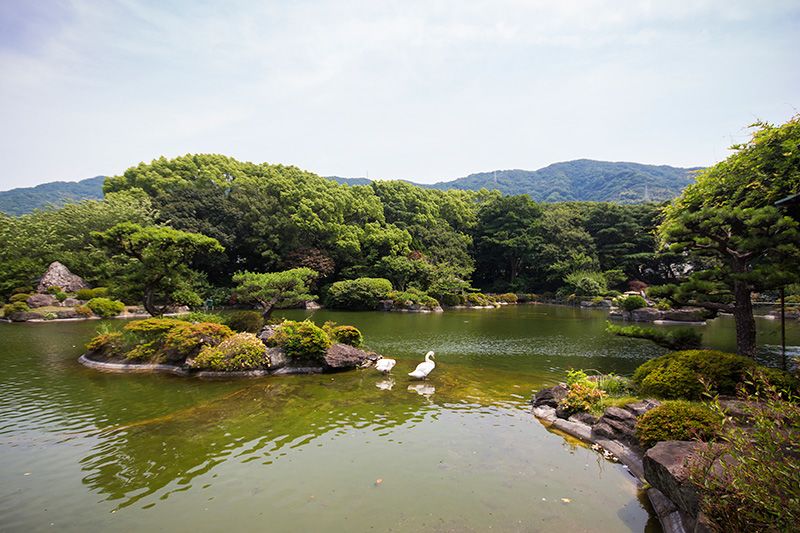 The Chōkyū-tei Japanese garden at Nakano BC’s headquarters in Kainan.
The Chōkyū-tei Japanese garden at Nakano BC’s headquarters in Kainan.
An Umeshu How To
Umeshu has traditionally been brewed and enjoyed at home. The following tutorial is based on kits Nakano BC uses on its tours.
Brewing a 1-liter batch calls for 200 grams whole ume, 200 grams rock sugar, and 360 milliliters of “white liquor” or similar spirit containing at least 20% alcohol. Wash the fruit individually and allow them to soak in water for at least four hours, removing any impurities.
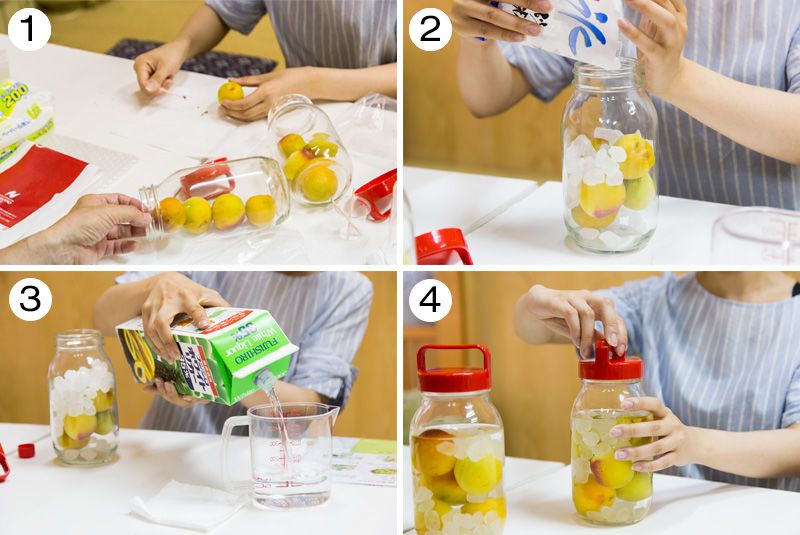 Making umeshu. A batch this size can be prepared in just five minutes.
Making umeshu. A batch this size can be prepared in just five minutes.
To make umeshu, dry the fruit with a kitchen towel, remove the stems with a toothpick, and place the ume in a 1-liter container. Next, add the sugar and liquor and seal the container. Finally, shake the mixture gently to evenly combine the plums and sugar.
Label the bottle with the date and ingredients and store it in a cool, dark place. The umeshu will be ready to drink after three months, but for a fuller flavor it is best to let it steep for six months to a year. Once ready, remove the plums and transfer the umeshu to a separate container, filtering it through a gauze or cheese cloth. Yamamoto says people tend to just leave batches until they are ready to drink. But he insists the secret to really tasty umeshu is to give it a gentle shake from time to time to help ensure that the sugar is evenly dispersed.
Umeshu is generally made with unripe plums as they are hard and less vulnerable to bruising. They also retain more acidity than fully ripe fruit, producing a delicious balance with the sweetness from the sugar. Ripe fruit, by contrast, are more vulnerable to spoiling, but provide a fuller, fruitier aroma to the finished product. Yamamoto’s championship-winning liqueur is made with sun-ripened Nankō ume, giving a fine balance of both refreshing tartness and rich fruity aroma.
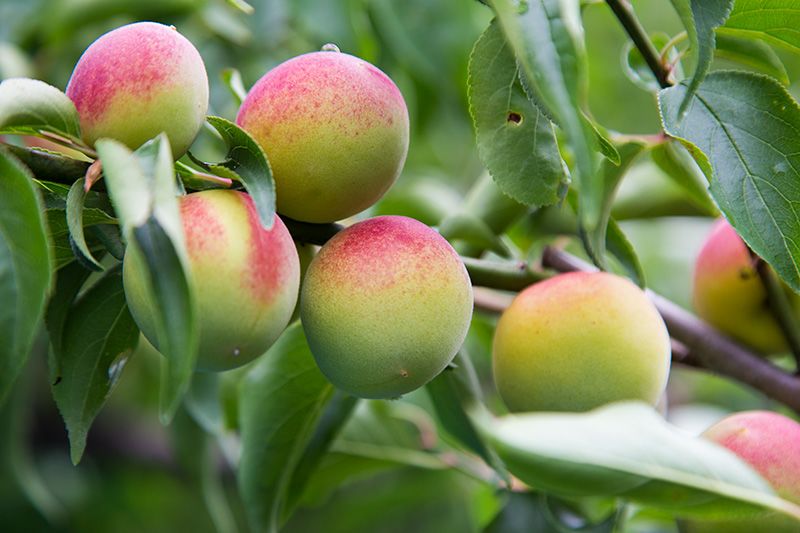 Nankō ume are a specialty of Wakayama Prefecture. The highly esteemed Beni Nankō variety are tinged red by the sun.
Nankō ume are a specialty of Wakayama Prefecture. The highly esteemed Beni Nankō variety are tinged red by the sun.
Bringing Umeshu to the World
Nakano BC uses local Nankō ume from the nearby town of Minabe to make its umeshu, steeping around 500 tons of fruit in 56 tanks. The company relies on the osmotic pressure of the alcohol and sugar to naturally extract the essence of the ume, preserving the natural flavor of the fruit.
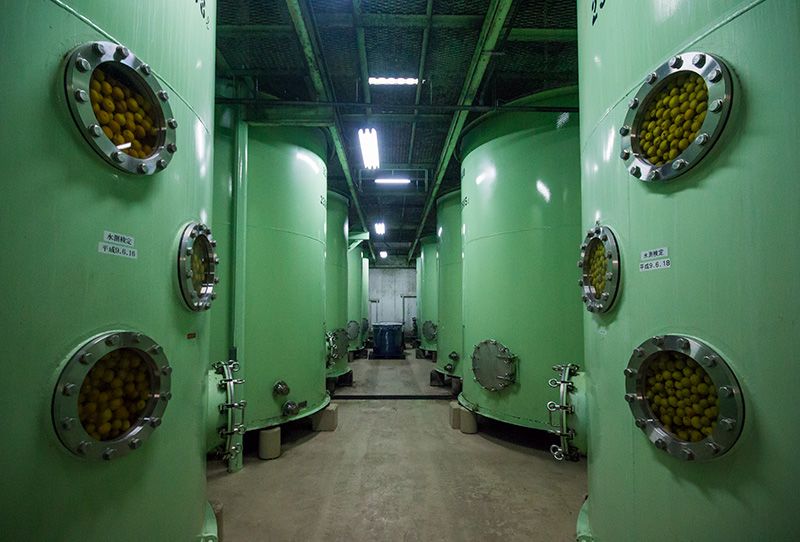 Each tank holds around 8.5 tons of fruit, or roughly 200,000 individual ume.
Each tank holds around 8.5 tons of fruit, or roughly 200,000 individual ume.
A team of workers carefully manage the acidity and sweetness of each tank, repeatedly tastings and mixing the fruit and changing tanks as necessary depending on the surrounding temperature and humidity. After around a year and a half of patient maturation, the umeshu is finally ready. “It feels a bit like raising a child,” declares Yamamoto.
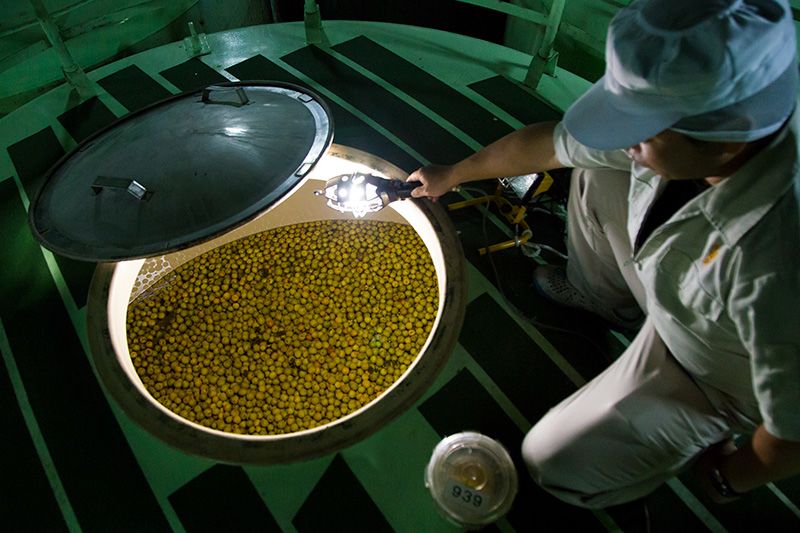 Yamamoto carefully inspects the contents of a maturation tank.
Yamamoto carefully inspects the contents of a maturation tank.
Faced with the prevailing home-made image of umeshu, it took a long process of trial and error for Nakano BC to develop a product that people were prepared to pay a little extra for. Tapping into the technical expertise developed in the food science research laboratory, the firm has come up with a series of around 30 styles of umeshu that incorporate such flavors as green tea, sanshō pepper, blueberry, strawberry, yuzu, and ginger. These have proved popular in Japan and have helped boost the status of umeshu internationally.
“The sweetness of umeshu means it is often enjoyed overseas as an aperitif,” explains Nakano. "We dialed back the sugariness a little to make the blended umeshu better suited as an accompaniment to a meal. It also makes it easier to adapt to different preferences in terms of tastes and aromas, which can vary quite a bit from country to country.”
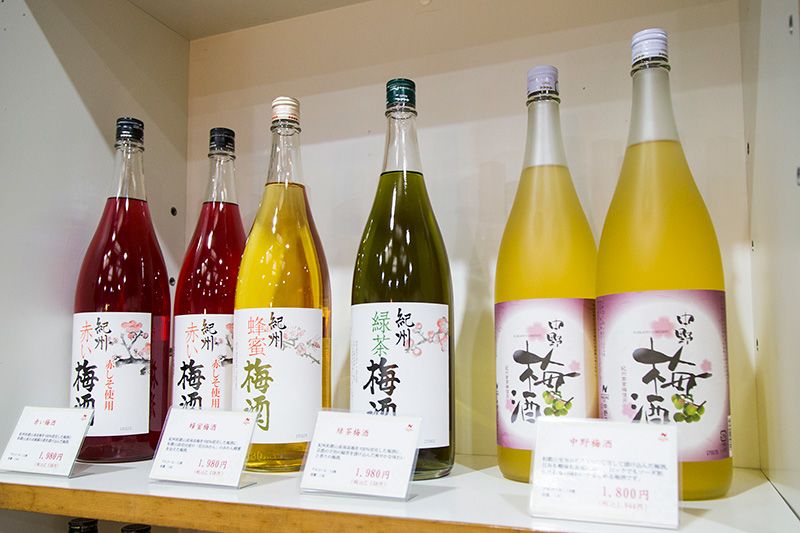 From left: Different blends of umeshu flavored with red shiso (perilla), honey, and green tea. On the right is the basic Nakano Umeshu.
From left: Different blends of umeshu flavored with red shiso (perilla), honey, and green tea. On the right is the basic Nakano Umeshu.
Another range is the Kishū no Akahon series that features ume extracts and is marketed as a health food product. The drinks contain high concentrations of a compound called mumefural that has been shown to help improve circulation and boost immunity. These new products and the expansion of demand for umeshu internationally have been a boon for Nakano BC. Sales have grown more than 25-fold from 2004 to 2009, and umeshu and related products now make up more than half of the company’s total sales revenue.
“We’re proud to be a Wakayama company,” says Nakano, “and we want to contribute to the community by developing products that make the most of local ume. We’d like to make the term umeshu more widely known overseas, where it’s often referred to as plum wine or apricot wine. Like sake, we’d like to think that one day umeshu too will become another Japanese word that is known and loved around the world.”
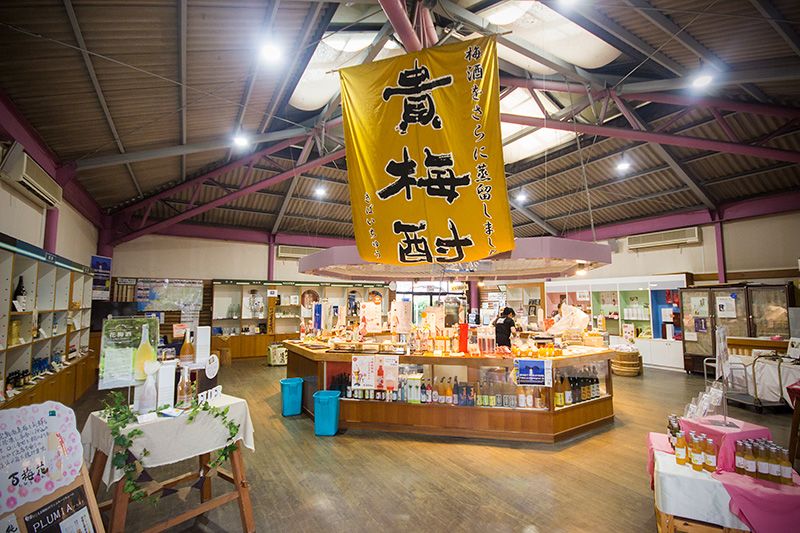 After the tour, visitors have a wide range of tasty umeshu-themed souvenirs to choose from.
After the tour, visitors have a wide range of tasty umeshu-themed souvenirs to choose from.
For information on arranging a tour with Nakano BC, see the company website: http://www.nakano-group.co.jp/tour/index/
(Originally published in Japanese on August 30, 2017. Banner photo: Workers at Nakano BC fill maturation tanks with ripe plums. Photographs by Nippon.com.)